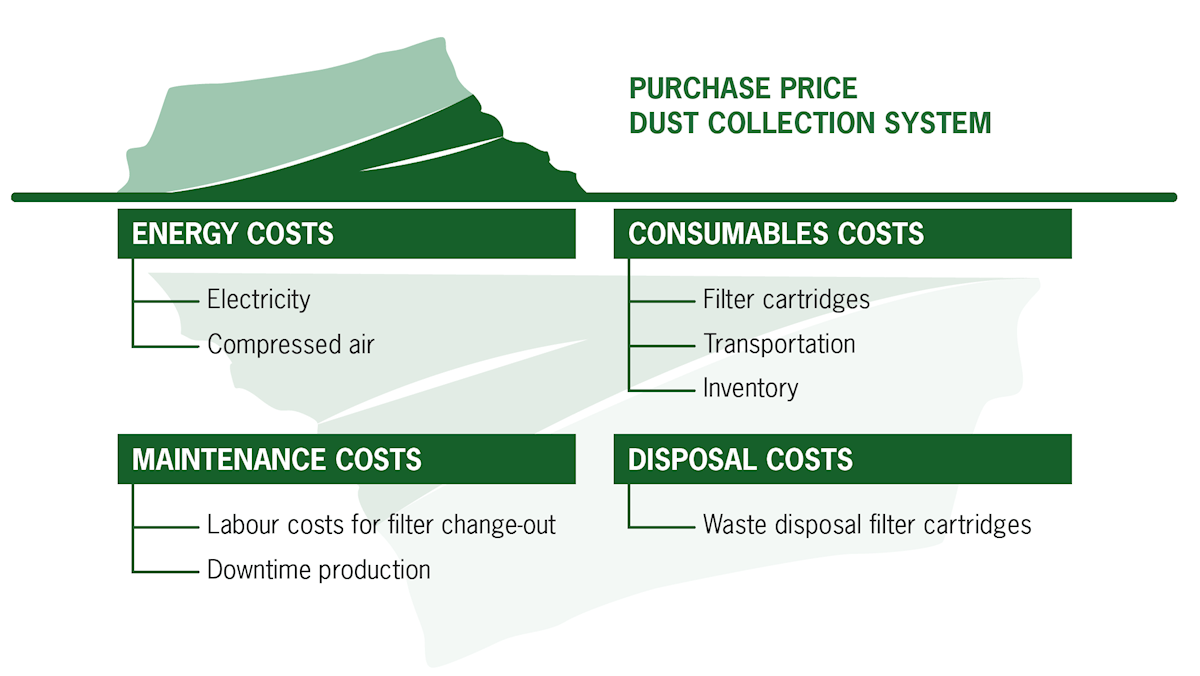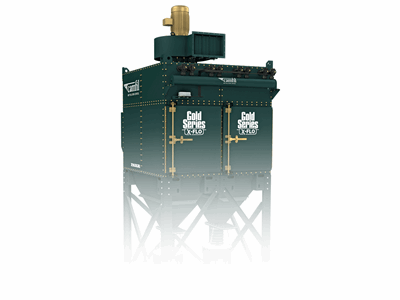Total cost of ownership
When purchasing dust collection systems and filter cartridges, the initial purchase price is just the tip of the iceberg. The true costs – energy, consumables and operations – are lurking below the surface. The good news is that there are ways to reduce these costs over the long term.

Dust collectors consume electrical energy the whole time they are running, but the largest portion of the electrical load goes to the fan motor that moves the air through the system.
Filters from dust and fume extraction systems are usually classified as hazardous waste as such the dirty filters require proper disposal according to local requirements. The disposal costs can be quite considerable and as such it is beneficial to use a premium filter that might extend filter lifetime, reduce the overall costs for disposal as well as the environmental impact.
There are many factors beside the initial purchase price of a dust collector which should be considered carefully when determining a dust extraction system. Low enegery costs and consumable costs can make the difference when calculating TCO over the lifetime of a system. Below some examples which should be included in a thorough TCO calculation:
You need support for a proper TCO calculation - our dust collection experts are glad to support you.
